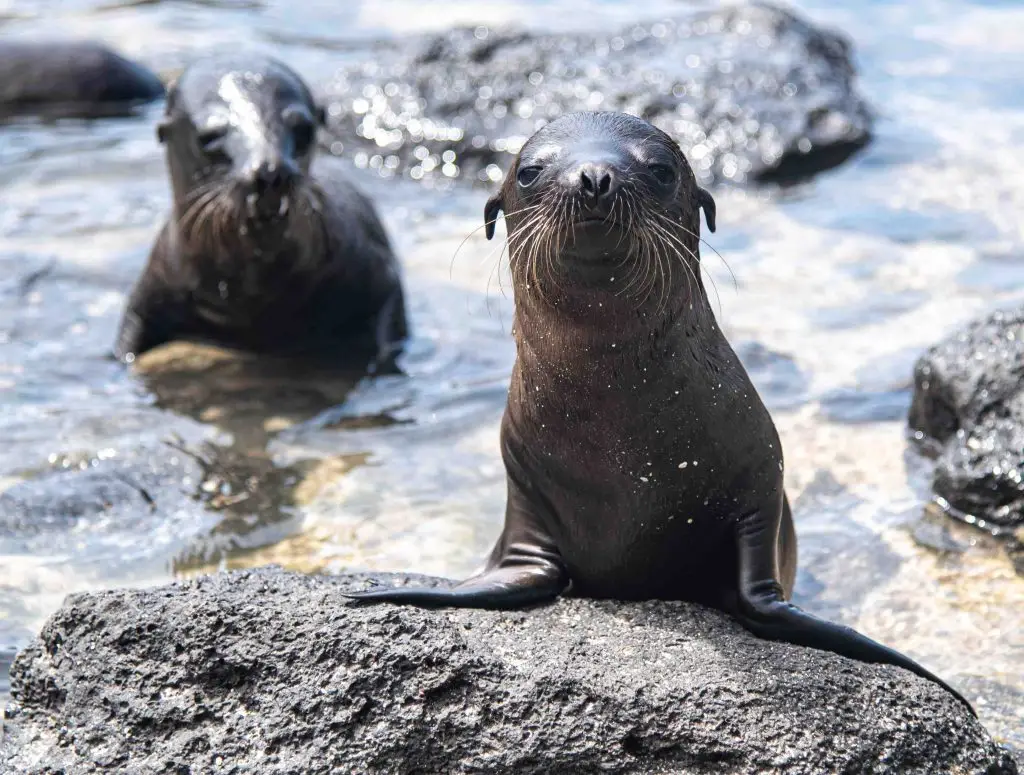Fotografía: Alexander Custer
Resumen Sencillo
En las últimas cuatro décadas, el lobo marino de las Galápagos (GSL, Zalophus wollebaeki) ha experimentado una significativa disminución de su población. Una preocupación importante es el creciente número de perros domésticos en algunas islas del archipiélago. Estos animales pueden ser una fuente de diversas enfermedades infecciosas que pueden transmitirse al GSL. Un patógeno importante es el virus del moquillo canino (CDV), que causa la infección viral que genera mayor preocupación para las agencias responsables de la gestión y conservación de los pinípedos de las Galápagos. Este virus se detectó en el GSL en 2010; sin embargo, se sabe muy poco sobre su circulación y epidemiología. Nuestro estudio analizó 110 muestras de suero de GSL recopiladas durante el verano de 2016 y 2017. Nuestros resultados mostraron un aumento en la circulación del CDV y resaltaron la importancia de monitorear enfermedades emergentes que pueden transmitirse de los perros domésticos a las especies silvestres del archipiélago.
Resumen
Antecedentes: El emblemático lobo marino de las Galápagos (GSL, Zalophus wollebaeki) ha experimentado una importante disminución de su población en las últimas cuatro décadas. Hay múltiples factores ambientales y biológicos que podrían estar implicados en esta disminución. Recientemente, se ha informado de evidencia de diversas enfermedades infecciosas zoonóticas que pueden representar amenazas potenciales. Dado que en algunas islas del archipiélago el riesgo de transmisión de enfermedades infecciosas puede ser promovido por el creciente número de perros domésticos, la vigilancia epidemiológica y la búsqueda de nuevos patógenos son esenciales. El virus del moquillo canino (CDV), uno de los patógenos virales que generan mayor preocupación para las agencias responsables de la gestión y conservación de los pinípedos de las Galápagos, se detectó en el GSL en 2010. Sin embargo, hay poca información sobre su impacto en la salud del GSL y sobre su epidemiología. Métodos: En este estudio, se recopilaron 110 muestras de suero de GSL durante el verano de 2016 y 2017. Todas las muestras se expusieron a células VERO de SLAM de perro que expresan el receptor de SLAM canino. Resultados: Nuestros resultados mostraron un aumento significativo (p = 0.04) en la frecuencia de anticuerpos neutralizantes contra el CDV en las muestras de 2017 (53.1%) en comparación con las muestras de 2016 (19.6%). Conclusiones: Nuestro trabajo confirmó la circulación continua y creciente del CDV en el GSL y resalta la importancia de monitorear enfermedades emergentes que pueden transmitirse de los perros domésticos a las especies silvestres. La vigilancia del CDV es esencial para entender el papel de este virus en la mortalidad del GSL y para tomar decisiones informadas para la conservación de la vida silvestre.
Conoce más del artículo científico en el siguiente enlace: www.mdpi.com/2076-2615/13/23/3657






